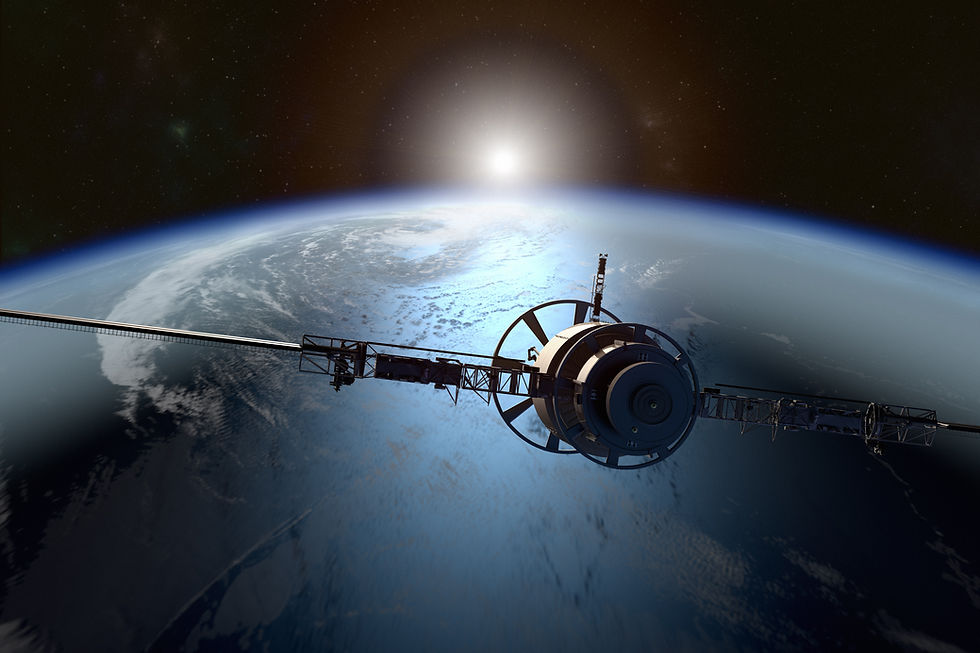Impact of Covid-19 on space technology
- Teenspire Global

- Nov 22, 2020
- 3 min read
Space as an industry hasn’t been spared by the Covid-19 crisis. The pandemic has led to huge delays in manufacturing and a disruption in the aeronautical and space tech supply chain, due to movement restrictions. In Europe, politicians are worried about a decline in the private sector investment in the aeronautical industry as a result of the pandemic.
However, leaders of nations recognize and understand the true potential of space in the long run and have ensured space scientists continue their normal operations. Agreements are still being signed, personnel being appointed, and funds from government budgets are still being allocated towards new space programs and satellites.
In fact, there have been instances where space scientists have been successful in producing cost-effective ventilators that are helping frontline workers fight the pandemic in hospitals and public health centers.

Innovation in the Space Tech sector - Defying the odds...
Innovation is at the heart of space tech and the space industry in general. If it wasn’t for some out of the box thinking by our space scientists, the moon would still be very unknown to us.
Space exploration is not just extremely complex and fascinating, it is also very expensive. To give context, in 2019, NASA’s budget was approximately $21.6 billion. The innovation that comes at that price is defining and changes the way we lead our lives. While we look at the latest Bluetooth earphones or the latest PlayStation as highly advanced, space technology is centuries ahead.
Below are a few of the recent innovations in space technology
1. Smart Spacesuit - Spacesuits allow astronauts to survive in extreme temperatures. They protect them from the harmful rays of the sun, space dust, and radiation in space. They also provide astronauts the necessary oxygen to breathe and water to drink. However, they are extremely expensive to produce and bulky to wear. Smart spacesuits is a technology that NASA has very recently invested in, meant to be worn on Mars and other planets. The smart suit is soft and stretchy and contains sensors that can detect the astronauts’ surroundings quickly, the data from these sensors is then displayed in a heads up display. The smart suit is said to revolutionize the future of space missions by reducing injuries caused by bulky suits and also heal by itself if damaged.
2. Crosscutting High Apogee Refueling Orbital Navigator - Space debris is a huge menace. In fact, the floating space junk can disrupt our satellites, make exploration harder, and disrupt space research. The Crosscutting High Apogee Refueling Orbital Navigator (CHARON) led by John Slough attempts to prevent this potential catastrophe. Through Active Debris Removal (ADR), the spacecraft would fling the largest objects of space debris into decaying orbits. CHARON would be used on an orbital vehicle that could fuel itself in air and work for 10 years at a time.
3. Venus aircraft (BREEZE project) - Led by Javid Bayandor at the State University of New York, would be used to explore the atmosphere of Venus. BREEZE which stands for Bioinspired Ray for Extreme Environments and Zonal Exploration is a solar-powered inflatable airship when combined with bio-inspired kinematics can explore the atmosphere of Venus.
5. SmallSat outer solar system exploration - We’ve had only a few aircraft go beyond Saturn’s orbit, nothing more. Through the Small Satellites similar to Cubesats, several satellites can be launched to explore the real boundaries of the solar system at 1/10th of the cost and mass as compared to the current satellites out there.
6. International Space Station (ISS) - Last but not least, the ISS has been a pioneer of space technology ever since it was built. The station weighs close to a million pounds and costs $160 billion to build. It allows about 6 spaceships to be connected and takes a lot to maintain. It takes many computers and several lines of software code to control and operate the ISS. Although extremely expensive to maintain, it’s rewards are far-reaching. It is because of the ISS today that we know so much about space and it’s effects on the human body.
.jpg)





Comments